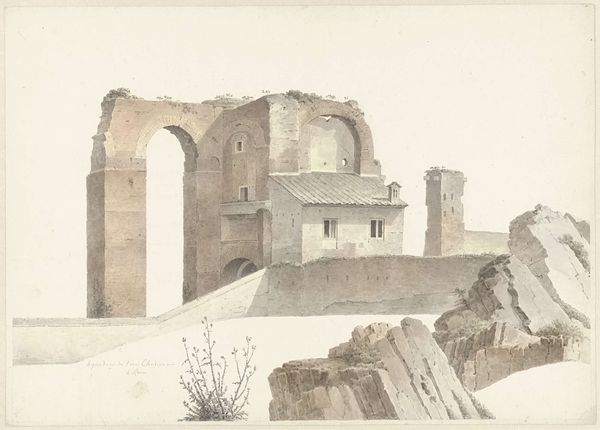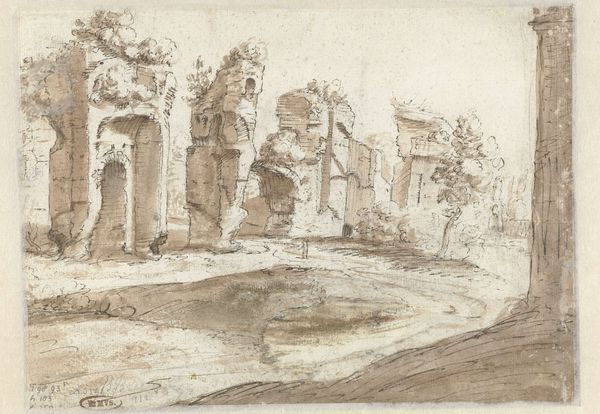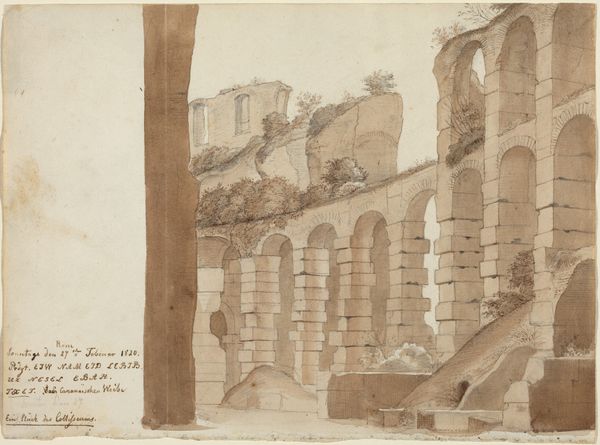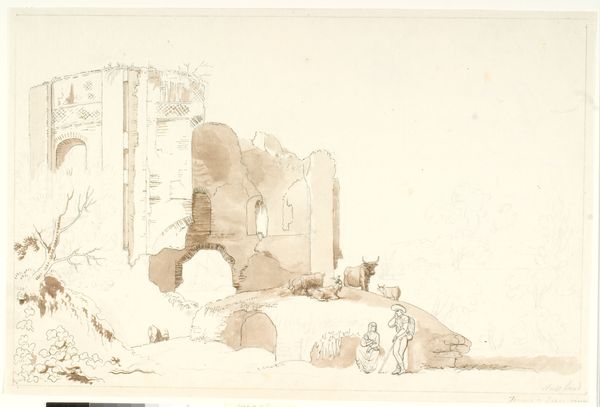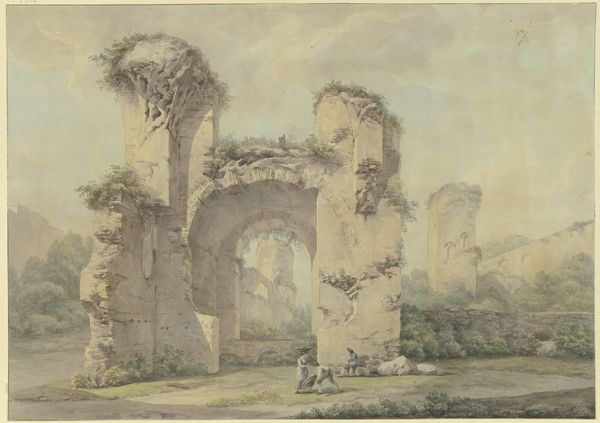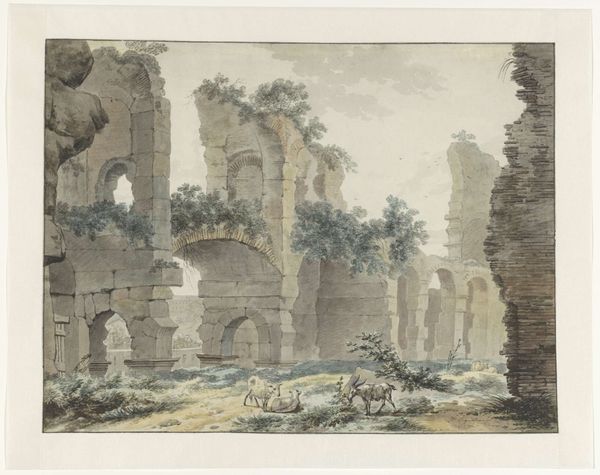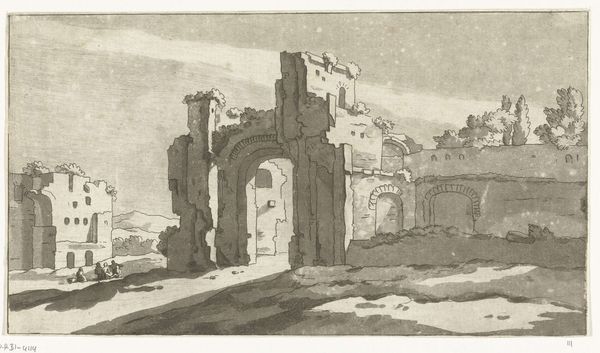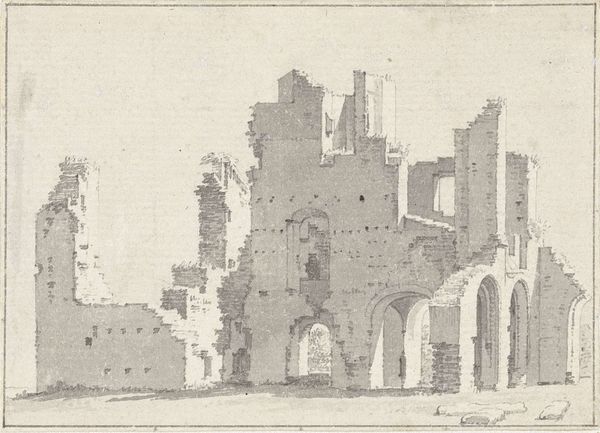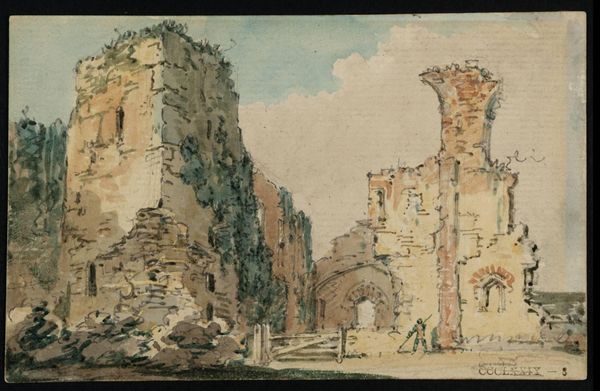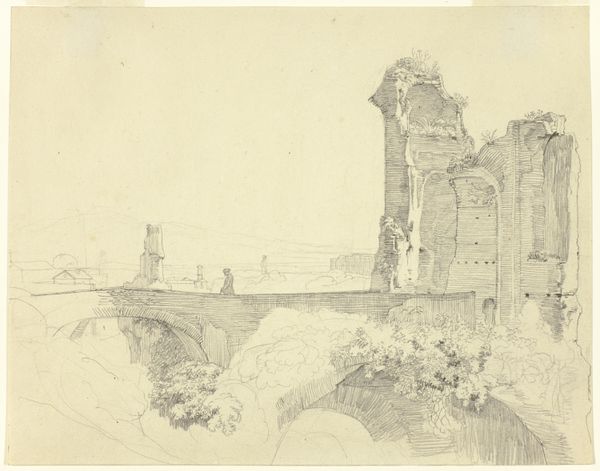
painting, watercolor
#
painting
#
landscape
#
romanesque
#
watercolor
#
cityscape
#
watercolour illustration
#
history-painting
#
watercolor
#
realism
Dimensions: height 425 mm, width 597 mm
Copyright: Rijks Museum: Open Domain
Curator: Let’s take a closer look at "Het Colosseum te Rome," or "The Colosseum in Rome," a watercolor by Josephus Augustus Knip, painted in 1809. Editor: There’s an immediate sense of grandeur and decay; a sort of melancholy permeates the delicate washes of color. Curator: Knip's treatment of light is rather remarkable, isn’t it? Notice the way the structure is delineated through careful modulations of tone and shadow. The composition directs our gaze, subtly reinforcing its architectural magnificence despite its ruinous state. Editor: Absolutely. But I also think it is vital to remember the physical work embedded here, I mean the labor to erect these structures originally, and how their disrepair reflects human toil but in another form, doesn’t it? The Colosseum wasn't just built; it was quarried, transported, and meticulously assembled. The very earth itself was shaped and reshaped. Curator: The ruins serve as a potent symbol, a study in architectural planes and forms, if you will. It encapsulates a history of imperial power, violence, and subsequent decline. The interplay of geometric solids presents an idealized rendition of classical architecture—its inherent structure laid bare through the disintegration of surface ornamentation. Editor: Beyond its structure, you’re observing the material reality of the stone, right? Each layer, each fragment tells us about material erosion by environmental forces, human exploitation through resource extraction, and also how economic and political structures allow buildings to flourish but simultaneously decay. This dialogue goes beyond any superficial examination, into questions about who constructs monuments and who profits from their ruins, too. Curator: True, and there is that enduring quality within it. In essence, the ruins provide an echo of classical ideals, serving as an ideal standard in their structural essence. Knip presents the monument not merely as a ruin but as a composition of balanced elements of light, shape, and line that speak volumes for aesthetic understanding. Editor: So we end up understanding something about artistic skill involved here, but what it took to put material into making the original structure? And even in watercolor form here to imagine its own relationship with our own environments too? Both past and present… Interesting!
Comments
No comments
Be the first to comment and join the conversation on the ultimate creative platform.


